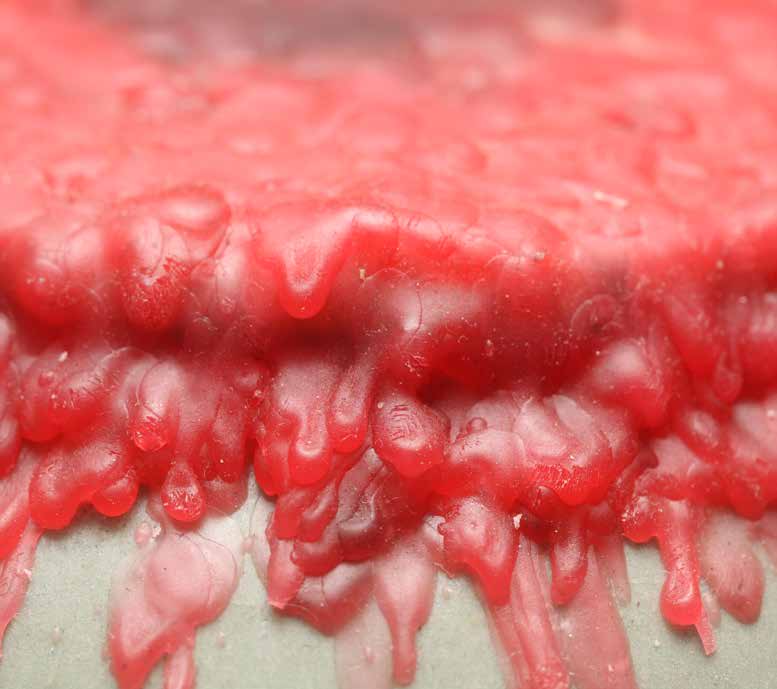
 |
|
In addition to providing a richer flavor and stronger Qi, a darker roast gives traditional Oolongs such as this month's tea another advantage over the more modern, greener Oolongs of Taiwan and China - the ability to age well.
The tradition of aging Oolong is as old as Oolong Herself. As with other types of tea, Oolong was quickly recognized to improve with age (especially in the long run). Yan Cha is traditionally aged for a while before it is drunk, and other areas of China have also intentionally and unintentionally aged Oolong over the years. Today, aged Oolongs are increasingly revered in Taiwan, where you can find Oolongs over 100 years old on occasion and more than a few decades old with relative frequency. Here, some Oolong teas are marketed as 'aged' after as few as six years of again, but most tea connoisseurs consider an Oolong to be truly aged once it's about 30, and we've savored a few Taiwanese Oolong teas that have been around one-hundred-something years. We certainly don't expect you to age this month's tea for 100 years, but we'd like to share more about aged Oolong with you so that you can know more about what this month's tea (and other traditional Oolongs like it) are capable of doing when allowed to sit in meditation for a few decades or longer. Unless they're stored in poor conditions, most Oolongs will become incredible if you simply wait long enough to drink them.
Aged Oolongs cover a broad spectrum, and go all the way from teas that were forsaken for years up to teas that won awards and sold for enormous sums before they were aged with the utmost care for 30 years or more (in their sealed, original canisters no less). There are certain factors which influence the quality of the tea at the end of decades of waiting, and one of these factors in undeniably the quality of the tea at the start of the aging process. Taiwanese aged Oolongs are generally made from a traditional style of rolled semi-balled Oolong, such as this month's tea. All other factors being equal, this style of tea (and other darker roast Oolongs in general) has an advantage over the greener Oolongs when it comes to aging.

One of the key differences is moisture content. Traditional roast Oolongs only have about two percent moisture content in the leaves (compared to five percent or more in greener, less roasted leaves), so they change and ferment more gradually and predictably. They are less likely to crumble into dust before their time or require excessive re-roasting to keep them from going all musty and moldy.
In order to have low enough moisture content for stable aging, Oolong tea needs a longer 'final roast' during its initial processing. This is a natural part of traditional Oolong processing in Taiwan and it is still practiced in some parts of China, too. Although a solid final roast and good storage are enough to keep the tea aging well for many years, many tea masters also like to re-roast the tea to keep the moisture content low during aging. Some do this several times a year, every five years or at other intervals, and it's common to light up the charcoal fire pit or switch on the electric roaster upon discovery of an accidentally aged tea. However, we are amongst another school of Oolong aging when it comes to roasting. More specifically, we don't re-roast our Oolongs at all. We find that it makes aged Oolongs taste more like roast than aged tea, and that the tea doesn't respond well to the inconsistencies of roasts (which are often done by different people using different roasting techniques over the years).
Because Oolong doesn't require moisture or oxygen to store, like Puerh does, you can age Oolong anywhere. Puerh really is best stored in humid environments, especially if you plan to age it for longer periods of time, but Oolong will happily transform wherever you live. Simply fill a jar to the brim, which reduces oxygen in the container, and seal it with wax. You'll want to put a string in the wax so it will be easy to open. If you want to check on it more regularly you can forgo the wax, but remember that every time you open the lid you are exposing it to unwanted air and moisture - disturbing the tea's meditation.
That said, we're not opposed to a roast just before it's time to drink an aged Oolong. Re-roasting the tea before brewing may dissipate some of the 'off' flavors that accumulated during aging, refresh the overall character of the tea and warm the tea up energetically, if it is done with skill. Roasting aged Oolong shortly before drinking it is relatively common amongst tea lovers in Taiwan, and it's easy to find small, earthenware Oolong roasting sets for home use in Yingge (Taiwan's pottery town).
A good aged Oolong often has a clear surface and a color like amber, notes of prune and Chinese medicinal herbs in the flavor and aroma, and a balancing, powerful Qi. It feels silky in the mouth and smooth in the throat. It has hui gan (a minty-cooling sensation in the mouth and throat after swallowing) and a sweetness that lingers almost as if it is being exuded from the throat. Although thick-walled purple clay Yixing teapots are generally preferred for aged Oolongs, a thin-walled, purple clay Yixing pot is said to be ideal for brewing an aged Oolong from Dong Ding (the home of this month's tea), as it will elicit more aroma and Qi from the leaves. But you'll know when you're brewing it well because the leaves will begin to murmur to you of their past, present and future, speaking kindly of their many spent years circling the sun and all the while whispering hints about the illusion of time...